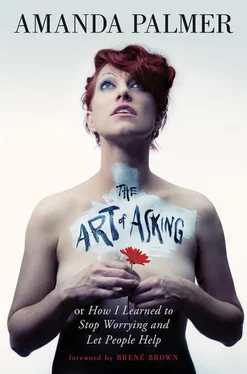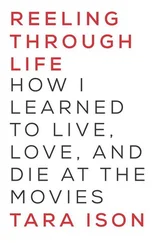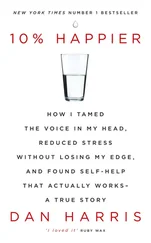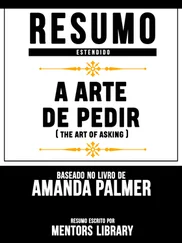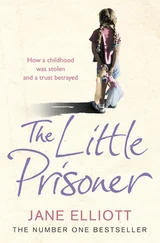A friend loaned us a gigantic plastic tank—to create a human-sized aquarium—and I paid a handful of artists to source dozens of phone books. They spent three days gathering them and handwriting, each on a separate yellow page, the names of the over twenty-four thousand backers. My band and I donned old-fashioned swimsuits, sat in the life-sized fish tank on the back of a truck, and began ripping every page out of every phone book and thanking every backer individually by holding each page up against the front wall of the tank, where a camera was recording a live webcast.
After we held up each page, we’d crumple it up and drop it to the floor of the tank. By midnight, we were sitting chest deep in an ocean of crumpled yellow-page names; it was glorious, and a few of us even went for a yellow-page swim.
When we mailed out the physical album to thousands of backers a few months later, we included a single random yellow-page surprise with each order. Someone started a “find your yellow-page person!” database online.
Two years later, people are still finding each other.
When they do, they tell me. And I tell everybody else. The net keeps tightening.
• • •
Here are three Kickstarter stories.
An indie musician named Deakin from the band Animal Collective presold a limited-edition CD and other rewards through Kickstarter in connection with his trip to a festival in Mali, Africa, and to support an anti-slavery charity there. He raised about $25,000 from a few hundred people. Then he dropped off the face of the earth: no communication, no record, no nothing. He never posted anything to the backer update page, and his backers started to grumble after a while.
In the backer-only comments, which are visible to the public, you can see the story slowly unfold. They start out excited, then patient, then everybody starts wondering what the hell is going on. A year in, people begin asking if they can please get their money back. But there is nobody to ask: the ship had been abandoned by its captain. Then comes the anger. They were miffed, but mostly because they’d been abandoned as collaborators.
The backers started to complain that they been “duped”; they begged for information, they resented the fact that he was off making a new album with his band. One backer posted: I gave this to my boyfriend as a fucking gift… which was never delivered. Ungrateful fuck .
A couple of years later, he gave an interview in which he explained that he’d been struggling with making the album, confirmed that all the money had made its way to the charity, and promised to deliver when he could. But there were still a lot of unhappy backers.
If Deakin had sent out a message to his backers saying:
Hey guys! So sorry but the recording fell through, here’s why, and here’s some pictures from my trip, and here’s a deep, personal story of what I saw while I was there… how do you feel if I just send you some signed photos instead?
…I think his crowd might have been less upset.
John Campbell is the creator of a webcomic called “Pictures for Sad Children,” who ran a Kickstarter to produce a hardcover collection of his work and raised $51,615 from 1,073 backers. After reaching his goal, making the book, and fulfilling many of the orders over the next year and a half, he posted a long, rambling blog piece about affluence, capitalism, and consumerism, and included this announcement:
I shipped about 75% of kickstarter rewards to backers. I will not be shipping any more. I will not be issuing any refunds. For every message I receive about this book through email, social media, or any other means, I will burn another book.
He also posted a video of himself burning a copy of the book. It looked like he was having a meltdown, and was out of resources (both in the money and energy departments) to complete fulfillment of his backers’ book orders. But here’s the interesting thing: If you look at the backer comments, his supporters weren’t actually all that angry. Most seemed worried about his well-being more than anything else.
His backers rallied . Most showed a high level of concern for the artist—you could tell that this was a community, not a soulless storefront. One backer offered to make a digital version of the book to send to those who hadn’t received their packages. Another set up a “Sad Children Book Club,” posted his own email address, and offered to serve as the intermediary post office for anyone who wanted to donate their book to someone who’d missed out.
Three months later, another artist named Max Temkin stepped in, drove to John’s house to collect the unfulfilled books, and paid the shipping fees out of his own pocket to get the remaining books to their backers.
There are patrons everywhere. The point, though, is that even though John fucked up royally and did the unthinkable—Insulted his fanbase! Burned his own book!—at least he communicated. And that act—no matter how dark the story had become—kept him connected with the crowd.
Josh Ente is an artist living in a part of New Orleans that was devastated by Hurricane Katrina. On his block, there was a collapsing, abandoned house, and he launched a Kickstarter to fill it with thousands of colored bouncy balls. He raised about $3,000 in backing from about two hundred people, but after everybody’s accounts had been charged, the city got an anonymous complaint and threatened to arrest him if he went forward—even though he had approval from the homeowner and the city permits department. There’s no reverse switch on Kickstarter—you can’t automatically refund people once their credit cards have been charged—but Josh couldn’t stand the idea of leaving people hanging.
So he got in touch with every person who funded the ball pit and offered them a choice: he would pay them back individually, by check, or put their money towards the charity of their choice. He even ran into an old friend at a party a few months later and gave him cash straight out of his wallet. Here’s how it broke down: about 40 percent asked for their money back, 40 percent sent it on to charity, and 20 percent said, Just put this towards your next art project . Josh had already spent the starting capital to build the project; he’d already bought the bouncy balls. Which means he paid all of those people back—and donated to all those charities—out of his own pocket, at a loss.
I wondered what he did with all the balls, so I asked him. His response: I was able to intercept them before they were delivered; as far as I know they’re still in a warehouse in Dallas waiting for me to pick them up. I also had two hundred pool noodles that were supposed to be used for safety padding on my porch for almost two years before I gave some to a Mardi Gras float and some to a Viking funeral .
• • •
My relationship with my fans is like a friendship. I have faced a slew of screwups over the years: accidentally double-booked shows, mail-order albums that shipped five or six months late. But most of the time, if I explain the backstory and the behind-the-scenes logistics of the situation, the audience stands with me. I’ve apologized tons of times. The only thing I must not do is break the code of honesty and steady, forthright contact. You can fix almost anything by authentically communicating.
• • •
The most expensive bundle package of the Kickstarter was the ten-thousand-dollar “art-sitting and dinner,” for which I promised to draw your portrait or vice versa… or whatever (clothing optional). Two people bought it. I delivered the first one in Washington, DC, and brought Neil along.
Nobody got naked. Instead, Neil and I painted a mural on a bedroom wall belonging to the unborn baby incubating in the belly of the Kickstarter backer, Chanie. We created a surreal scene featuring a moon-man playing the piano and a killer rabbit in a hot-air balloon while Chanie and her husband sat on the floor of the empty nursery, chatting with us about bad films, sibling feuds, and local politics. Then we took them out for Indian food.
Читать дальше
